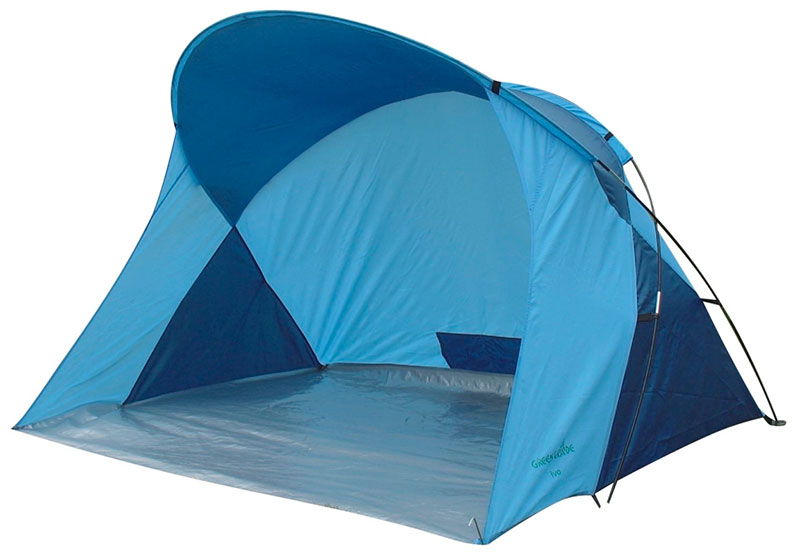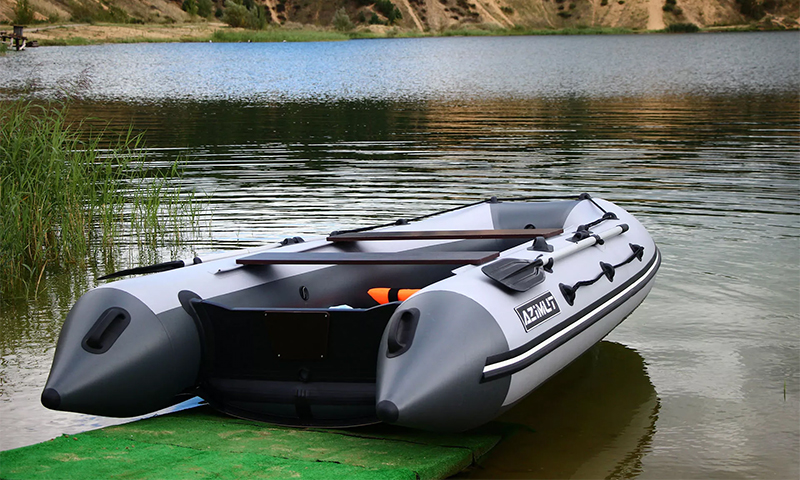Hiking and family outdoor recreation is the best cure for stress. Which tent to choose for a friendly company of 6 people, and which model will not freeze in the mountains? What to look for when choosing a tent and how to read the product label? The shape, weight, material - all of this matters and affects not only the cost, but also convenience in use and duration of use.
The wrong choice of a tent is discomfort, cold and rheumatism, irritation during installation and overrun of physical forces during a hike. To face this far from civilization is a difficult and unnecessary test. After spending a little time to study the issue, you can quickly choose a tent in full compliance with their needs and preferences.

Content:
The best manufacturers of tents - which company to choose
Hurry on a hike or just too lazy to read material on the choice of tents entirely? In this case, we recommend to pay attention to the products of the best manufacturers of tents.
Among the most prominent representatives of the segment it is worth noting:
1. Alexika
2. Bask
3. Camp
4. Coleman
5. Marmot
These manufacturers offer a wide range of products for family and individual leisure, professional expeditions.
Tent device

Departure on the nature can be delayed for several days, and the tourist trip lasts 2-3 weeks. You can't do without a roof over your head, and you just can't find a better temporary weather protection than a tent. This temporary dwelling is used by tourists, geologists, archaeologists, climbers and ordinary lovers of weekends outside the city.
The modern tent has a simple structure, the basis of which is a frame made of light and durable arcs created from aluminum or fiberglass. They give shape to the temporary structure, and an awning is used to protect it from wind, weather and cold. It can be single-layered or multi-layered, but it must be made of waterproof material. From the more dense material, the bottom of the tent is made, which becomes a protection against water flows after rain and forest dampness. The tent can be completed with additional elements - vestibule, skirt, ventilation system, windows, mosquito nets.
Types of tents
The classification of tents is diverse, among the main criteria - the purpose, shape, seasonality, material of the awning.
According to their purpose, the tents are:
1. Assault

Designed for climbing the mountain tops, they are compact in size, simple and quick to install, high structural strength.
2. Trekking

Lightweight compact tents for hiking, used for overnight stays at the prepared parking.
3. Camping

High and spacious superior tents designed for long stays in one place.
4. Beach

They are made from thick material, slowly warming up in the sun, but do not protect from rain.
5. Tents for winter fishing

They are made of heat-insulated material and have holes in the floor for drilling holes.
The main difference between the tents, depending on their purpose - size and weight, level of comfort.
The form distinguishes the following types of tents:
1. Hemispheres

Tents in the form of a hemisphere are able to withstand strong winds, water easily rolls off the surface of the awning, and a large volume increases the degree of comfort. The disadvantage of hemispheres is the relative complexity of the installation, high energy consumption for heating.
2. Half a girl

Tents in the form of a semi-bar have a frame of arcs that do not overlap with each other. This simplifies installation, but reduces stability. Most models are large, making them the best option for camping.
3. Tent

Tent tents have a gable frameless design, this makes them light, but difficult to install. Manufacturers produce single and double tents of this type, they have a small internal volume, which allows you to quickly heat the air in them with your breath. Among the disadvantages - poor resistance to wind gusts.
It is customary to go on hiking trips not only in summer, therefore seasonality is important for the tent.
According to this criterion, the following models are distinguished:
- summer - made from thin materials, have a competent ventilation system;
- three-season - designed for operation in spring, summer and autumn, made of dense materials;
- Winter - tents of the strengthened design, differ in stability and presence of an awning from dense material.
Winter tents can be used at any time of the year, they are able to withstand strong gusts of wind and rain.
According to the materials used, all the tents are divided into two types:
- polyamide (made of nylon);
- polyester (made from polyester).
Nylon is durable, has a small weight, low cost. Among the shortcomings - sensitivity to ultraviolet light and the ability to stretch when wet.
Polyester has increased strength and is resistant to all negative factors. Polymeric materials are created from threads of different weaving. Manufacturers when marking must indicate the technology of fabric manufacture.
There are the following types of weaving:
- Taffeta - twisted yarns are used;
- Oxford - weave with matting, has increased strength;
- Rip Stop - reinforced weaving.
The density of weaving is indicated in the marking with numbers, followed by the letter "T". Tent fabric 280T will be stronger than the model of fabric 210T, but at the same time its weight will be more. The fabric is impregnated to protect against moisture with polyurethane or silicone. Polyurethane (PU) has a lower cost, silicone (SI) is more durable and more reliable.
Tent selection options

The main parameters when choosing a tent are:
Capacity
Manufacturers produce 2, 3, 4-seat tents and models designed for a much larger number of tourists. The triple tent can comfortably accommodate three people with luggage.
Weight
It is of particular importance for tourists going on hiking and cycling trips. To carry on the shoulders 25-30 kg of additional weight in order to sit down for the night with chic is not practical. For trekking tents, the optimal weight is from 2 to 6 kg, assault tents have a weight from 3 to 5 kg, and camping models from 12 kg and more.
Arc material
The longest service life of arcs made of aluminum alloys, polymer arcs are no more than 5 years.
Permeability
It is expressed in mm of a water column, which the tent is able to withstand without letting moisture inside. For a summer family holiday, a model with an index of 1500 mm is suitable; if you plan to go on hikes in spring and autumn, it is better to opt for a model with a water permeability of 3000-4000 mm. High-altitude and expeditionary tents should have this parameter not less than 8000 mm. Separately, in the specifications, the permeability of the bottom is indicated; this parameter should have maximum values.
Length and width
Dimensions of the model should correspond to the growth of the largest of the travelers, in the opposite case, tourists will experience discomfort due to the unusual position for sleeping or because of the need to open the entrance of the tent for comfortable sleeping accommodation.
Number of tent layers
Single-layer tents are becoming less common, they are used to store things, bicycles, food. Two-layer models have a waterproof awning and an inner layer of lightweight material that passes air well. In such tents, condensate does not accumulate on the walls, which ensures a high level of comfort.
Tambour height
In camping tents, the height of the vestibule is of great importance. This office is used as a dining room. For table setting it is desirable to be able to stand upright and for this reason the optimal height of the vestibule lies within 1.8-1.9 m. Another additional parameter of camping tents is the number of entrances. If the vestibule is used as a canteen or luggage is stored here, then it is easier to get into the sleeping compartment through an additional entrance.
Window
Do you need a tent window? Trekking tents are mainly used at night and tourists will not enjoy the views after a long day’s trekking. For extreme tents, windows are not relevant, as they reduce the strength of the structure and its tightness. They are not needed in models designed for winter fishing. Camping tents are installed for a long time and windows can add comfort, especially if they are equipped with mosquito nets.
Number of sleeping compartments
For a camping tent, designed for a large number of tourists, an important parameter is the number of sleeping compartments. One of them can be distinguished to children, others are intended for adult family members. The sleeping compartment is traditionally a low ceiling, this will provide the maximum level of comfort on cold nights, since it will be easy to warm yourself with your own breath.
Which tent to choose

1. When choosing a tent for extreme hikes and alpine ascents, it is recommended to opt for a model in the form of a hemisphere of small height. It is well resisted by strong wind and rain, can withstand the snow load.
The tent must comply with the following parameters:
- weight - 4-6 kg;
- water resistance - 4000-8000 mm;
- water resistance of the bottom of the tent - 6000-10000 mm;
- awning material - polyester Rip Stop;
- material arc - aluminum.
2. A trekking tent for 1-2 people may have a hip-shaped form, for 2-3 people, preference should be given to a semi-sphere or a hemisphere of a small height.
The tent must comply with the following parameters:
- weight - 2-6 kg;
- water resistance - 15000-2000 mm for short transitions, 3000-4000 for multi-day transitions;
- water resistance of the bottom of the tent - 3 000-6 000 mm;
- awning material - nylon with polyurethane impregnation;
- Arc material - polymer or aluminum.
3. Camping tent can be in the form of hemispheres or half-cubes, the height of the vestibule should be at least 1.8 m. For sleeping compartments, it is necessary to use double-layer structures.
The tent must comply with the following characteristics:
- weight - 12-25 kg;
- water resistance - 4,000–10,000 mm;
- water resistance of the bottom of the tent - 6 000-10 000 mm;
- awning material - polyester Rip Stop;
- arc material - aluminum or steel.
The number of entrances should correspond to the capacity of the tent: for models for 6-10 people, preference should be given to tents with 2-3 entrances.
How much is a tent

The cost of the tent depends on the popularity of the brand, capacity and technical characteristics:
1. Prices for tents for extreme travel for 2-3 people range from 25-45 thousand rubles.
2. Trekking models are the most diverse, the cost of products of well-known manufacturers can vary from 10 to 45 thousand rubles.
3. Camping tents are designed for a different number of tourists, the more of them - the higher the cost. Most manufacturers offer models in the range of 15-45 thousand rubles.
4. Specialized tents for long-term camps of geologists, archaeologists can cost 150-200 thousand rubles. These models are designed to operate in difficult climatic conditions, they are equipped with powerful arcs that can withstand strong gusts of wind and snow load. Tents are designed for use of a stove or air conditioning system, therefore, they are distinguished by maximum tightness.
It will be interesting to friends too







